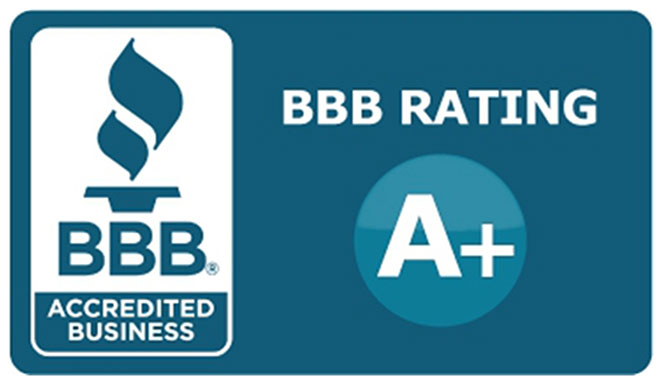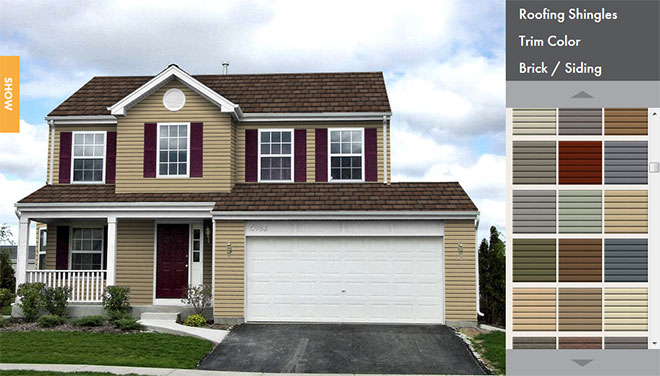Roof Repair and Maintenance
On average, a roof that is properly maintained lasts longer and is less vulnerable to leaks. If damage from the sun, wind, snow and rain are left unchecked, the result will be leaks and serious damage to other parts of the building, like the facade, the stairwells and the windows. While leaks normally start slow, they can create ideal conditions for rot, mold, and fungus to grow in attics and wall framings, which is not only costly to eradicate, but can also pose a dire heath hazard for residents. Given the high stakes, it’s important to know what type of roof is over your head, its current condition, and the terms of its warranty.
For most buildings, and depending on which system is used, a roofing manufacturer will normally give a 20-year warranty, although some will give 10-, 15- or 25-year terms. Regardless of the length of the warranty, the reason for the respective period of time, is that most roofs are built to last for longer than the warranty stipulates. If they give a 20-year warranty, that means it will probably last for 30 years because these roofs are tested, and no manufacture is going to stick their necks out. Some companies like CertainTeed, for example, have several roofing products for which they offer 50-year or lifetime warranties, but it depends on the product and the type of roofing material being installed.
Roof Repair and Maintenance Goes a Long Way!
While some industry experts recommend hiring a reputable roofing contractor to examine a roof every year or two, this job should really be done twice a year, usually in the spring and fall – after the ice thaws and again before the snow starts. Ice causes building materials to expand and contract, which can weaken seals and lead to leaks. Heavy snow, on the other hand, adds weight, which may also cause problems if roof surfaces warp and buckle under the load. Both scenarios are hard to avoid, and can seriously compromise a roof’s integrity.
The best way to preserve a roof is to conduct biannual inspections to check for roof damage and take preventive steps before bedrooms turn into pool rooms. When it comes to roofs and leaks, you have to be a detective, and keep asking questions.
All too often, building owners don’t follow regular inspections schedules and only deal with the roof when an emergency is reported, which is often too late. A roof should be inspected two times a year to make sure the membrane hasn’t lifted, or that coping tones and flashing aren’t loose. It can save thousands of dollars and adds years to the roof.
Inspections can turn up big problems – or head them off at the pass – but they can also highlight smaller repairs your building supervisor or managing agent may be able to handle relatively simple repairs like caulking, cleaning out gutters and removing standing water that need not necessitate a visit from your roofing contractor. Simple maintenance goes a long way!
Environmental Conditions
While it’s assumed that with pollution, snow build-up, and more traffic in multi-family buildings, urban roofs might be more at risk than suburban or rural roofs, the major contributing factor to wear on any roof is weather. The factors of urban or suburban doesn’t have great play in this situation. It’s the climate.
Keeping the Rain Out of Your Building
In the city we have a freeze-and-thaw cycle, which creates movement and cracks, adding that extreme winters often will result in serious cracks come spring. In addition, piled-up snow should be removed from flat roofs by building staff. It’s also important to make sure that areas on the roof that have collected “ponds”of standing water be marked because that is where most leak problems start.
In addition to weather, city buildings do have a few other considerations to contend with, like vandalism and people using roofs not built for social reasons in the summer months, both of which can contribute to troubled areas.
Repair vs. Replace
For most building owners and property managers, the common response to any roof problems is patching, which can temporarily stop leaks and increase the longevity of the roof – but this can only postpone the inevitable.
It’s not cost-effective in the long run to keeping patching leaks. You have to look at it like an old car and say to yourself, “Do I want to keep putting money into this old car?”
In most cases, the existing roof can be built upon, which is the most cost-effective route. However, in cases where the roof has to be completely removed or rebuilt, clearly the costs will increase exponentially. Some factors that determine the final cost of the project are location and accessibility to the roof, including the contractor’s ability to get supplies and workers to the location.
Cost per square foot for a new roof system ranges between $4 and $35 – which is a considerable discrepancy – but industry professionals say that since each roof is completely different, an honest assessment of roof repair or roof replacement costs can’t be quantified unless there is an inspection. There are too many elements to consider. The flashing could be shot for example, or it could be something else; it’s just too hard to tell without looking at it.
Cut a section of the roof’s membrane to test for moisture and hazardous materials in order to get a sound professional opinion on whether the roof needs to be reconditioned or completely removed and rebuilt. If the existing roof can be built upon, you may still be able to get a warranty on the new roof, but if the roof is completely gone, the roof has to be removed, which increases the costs considerably.
Another consideration is if the roof contains toxic materials like asbestos, which requires a specialized work force, and proper permits. Removing roofs with asbestos can run additional dollars per square foot.
Since roof repairs are inevitable, it’s vital that a building’s board or management keeps the reserve fund robust for repair, replacement, and maintenance. This figure should be calculated in relation to the cost of the original roof and the number of years left on the warranty, and should also include monies for biannual inspections.
You have to put money aside for maintenance because one day you’ll have to face the music. However, building owners often overlook the roof. Few building owners factor in the short-term costs – both time and money – of complaints, angry tenants, irritated property managers, repairs, and other issues that in the end make a cheap roof more costly!
Hiring a Professional Roofing Contractor
It is important for building owners to retain a professional roofing contractor (preferably the contractor that installed the system) to perform roof maintenance that includes visual inspection and necessary repairs. If building personnel decide to tackle a roof system problem, their actions may void a warranty. In addition, repairs made by an unauthorized contractor will likely void a warranty.
If you have questions about your building’s condition, in the Twin Cities and surrounding areas of; St. Louis Park, Edina, Minnetonka, Bloomington, Plymouth, Excelsior, Wayzata, Eden Prairie, Chanhassen and Chaska, consult a reputable Minneapolis Minnesota commercial roofing contractor that has experience in commercial roof systems. Whether you need to repair, restore, replace, or install a roof, they can work with you to discuss all of your commercial roofing options.
- Home
- Maintenance
- Exterior
- Keeping the Rain Off Your Head
Keeping the Rain Off Your Head
Roof Repair and Maintenance
Article Options
While it may be a cliché, it’s entirely true that few things are more important than keeping a solid roof over your head. And like any other aspect of a building’s structural composition, your roof has a life span that is dictated by time, wear-and-tear, and environmental conditions.
Warranties and Watchful Eyes On average, a roof that is properly maintained lasts longer and is less vulnerable to leaks. If damage from the sun, wind, snow and rain are left unchecked, the result will be leaks and serious damage to other parts of the building, like the façade, the stairwells and the windows. While leaks normally start slow, they can create ideal conditions for rot, mold, and fungus to grow in attics and wall framings, which is not only costly to eradicate, but can also pose a dire heath hazard for residents. Given the high stakes, it’s important to know what type of roof is over your head, its current condition, and the terms of its warranty.
For most buildings, and depending on which system is used, a roofing manufacturer will normally give a 20-year warranty, although some will give 10-, 15- or 25-year terms. Regardless of the length of the warranty, the reason for the respective period of time, explains Abe Grossman, regional sales manager for the Bayonne, New Jersey-based Garden State Services, LLC, which serves the tri-state area, “is that most roofs are built to last for longer than the warranty stipulates. “If they give a 20-year warranty, that means it will probably last for 30 [years] because these roofs are tested, and no manufacture is going to stick their necks out,” says Grossman. Some companies like CertainTeed, for example, have several roofing products for which they offer 50-year or lifetime warranties, but it depends on the product and the type of roofing material being installed.
While some industry experts recommend hiring a specialty inspector or reputable roofer to examine a roof every year or two, this job should really be done twice a year, usually in the spring and fall – after the ice thaws and again before the snow starts. Ice causes building materials to expand and contract, which can weaken seals and lead to leaks. Heavy snow, on the other hand, adds weight, which may also cause problems if roof surfaces warp and buckle under the load. Both scenarios are hard to avoid, and can seriously compromise a roof’s integrity.
The best way to preserve a roof is to conduct biannual inspections to check for damage and take preventive steps before bedrooms turn into pool rooms. “When it comes to roofs and leaks, you have to be a detective, like Colombo, and keep asking questions,” Grossman says.
“Two qualified roofers walking around up there for a day and inspecting with the proper equipment buys you time,” says Gary Zaremba, president of the New York City-based Artisan Restoration Group. He adds that on average, a flat roof inspection should cost between $700 and $1,000.
Grossman agrees, and adds that all too often, building owners don’t follow regular inspections schedules and only deal with the roof when an emergency is reported, which is often too late. “A roof should be inspected two times a year to make sure the membrane hasn’t lifted, or that coping tones and flashing aren’t loose,” he continues. “[Buildings] usually don’t do [inspections], but they should. It can save thousands of dollars and adds years to the roof.”
Inspections can turn up big problems – or head them off at the pass – but they can also highlight smaller repairs your building supervisor or managing agent may be able to handle relatively simple repairs like caulking, cleaning out gutters and removing standing water that need not necessitate a visit from your roofing contractor. “Simple maintenance goes a long way


 Click Here
Click Here Click Here To Use
Click Here To Use